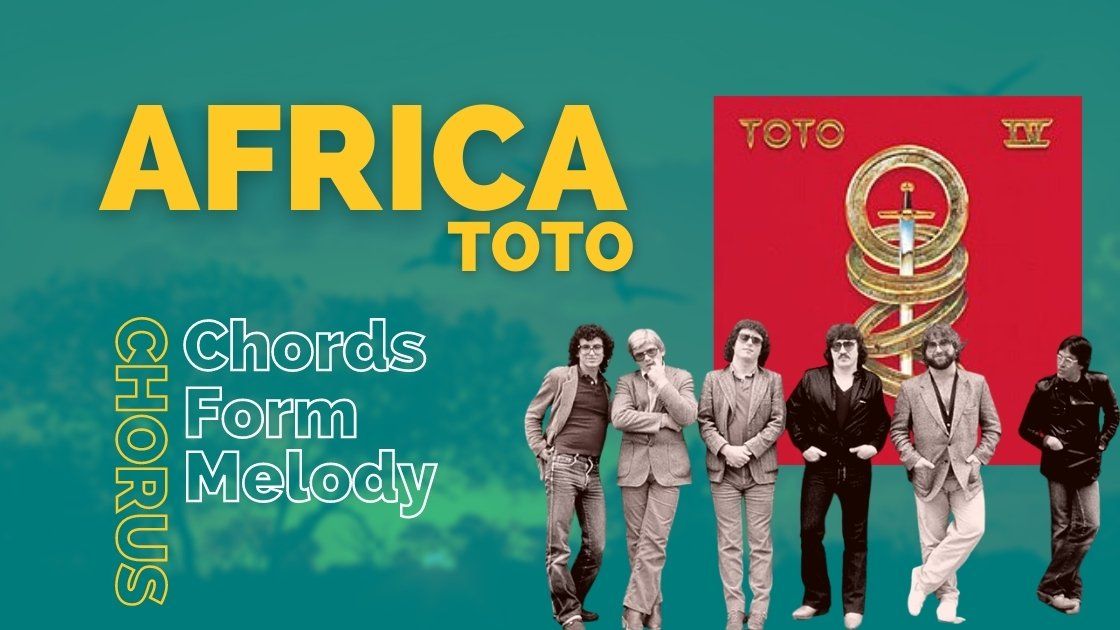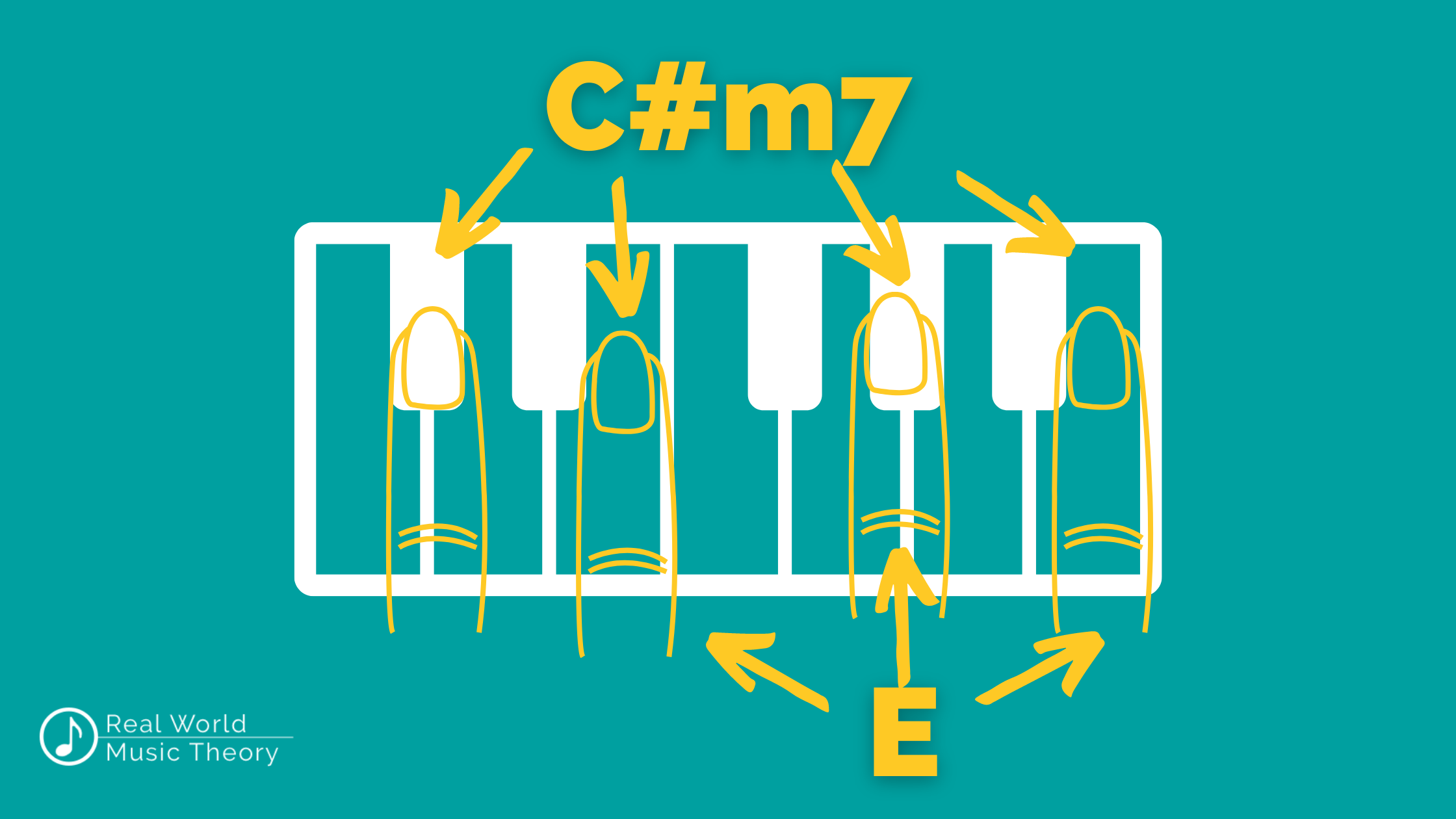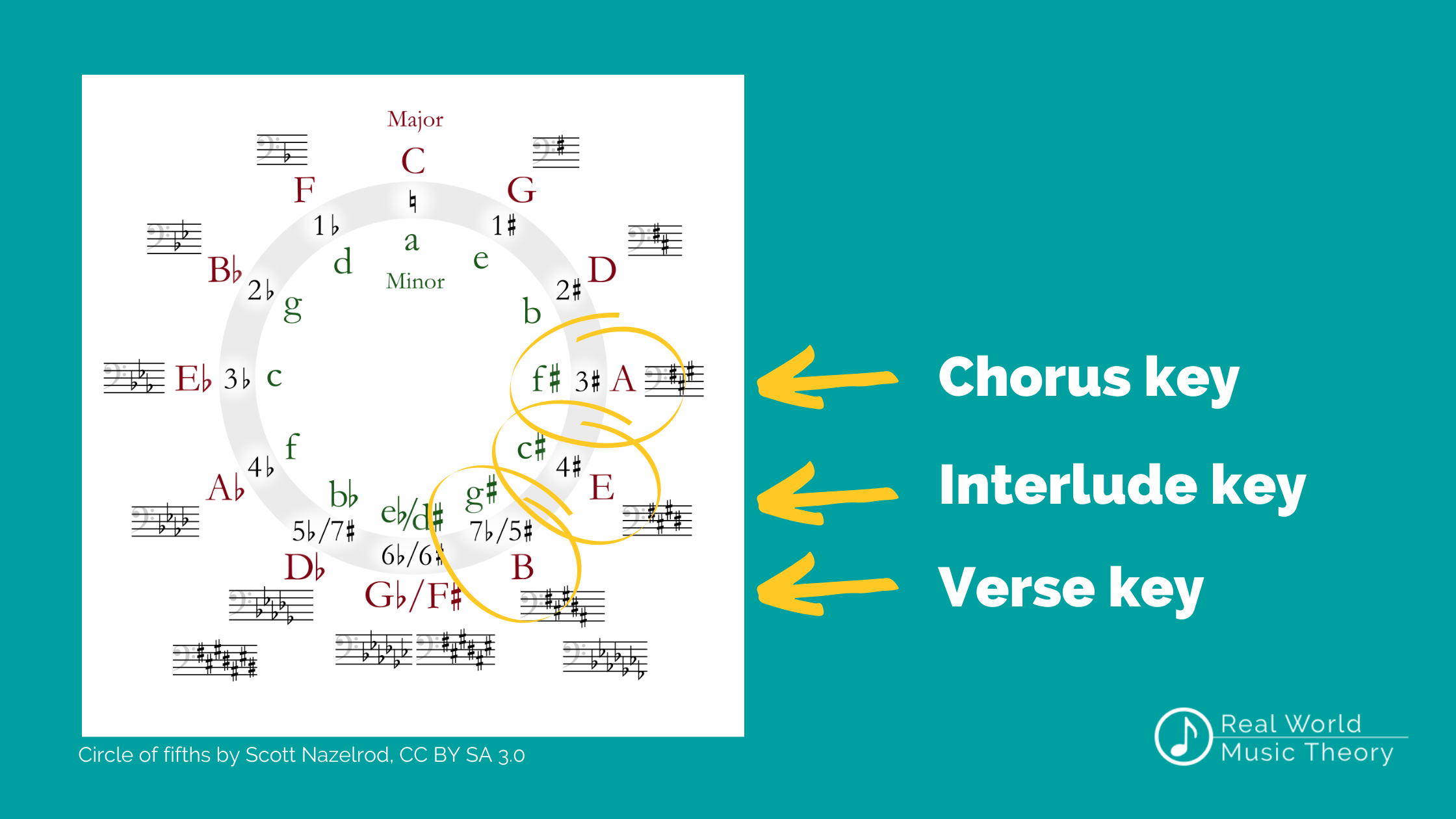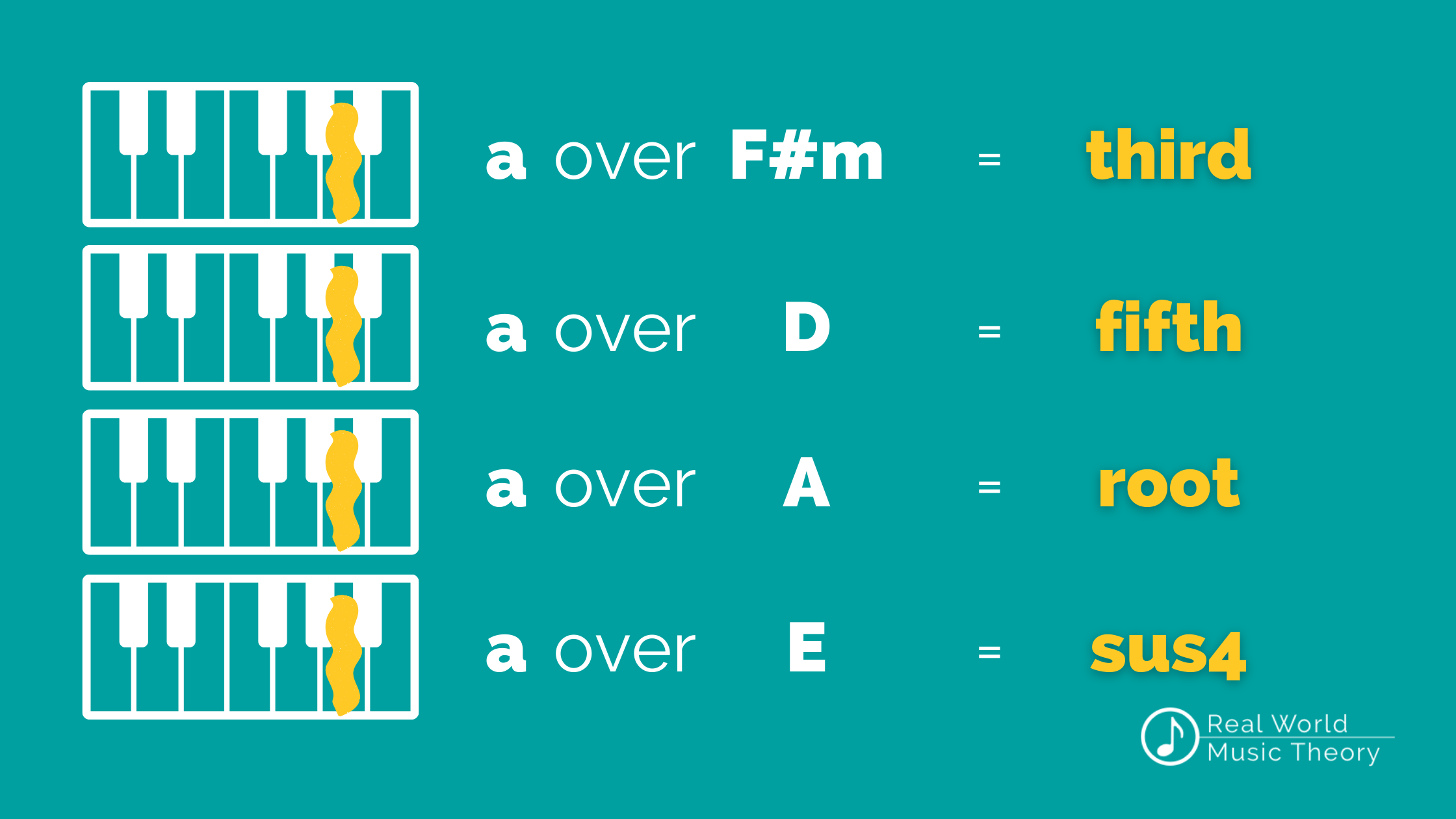How a one-note melody became a number one hit
How to turn a one-note melody into a Billboard number one hit? Learn the music theory Toto used in their song Africa. We'll talk about one-note melodies, common chords and expectation vs. deception.

Africa (Toto) – Analyzing the Chorus
Can you write a number one hit with only one note?
The song Africa is Toto's only number one hit on the Billboard charts – hard to believe, because Toto created other masterpieces such as Hold the Line, Rosanna or 99. And while this 1982 song stands out as their most successful chart hit, it also stands out because of another interesting quality: the astonishingly simple melody of its chorus!
Let's dive into the compositional elements Toto use in the chorus of this hit: the melody (surprisingly simple), the chord progression (learn a pop music standard progression) and the form (bend the rules a little). Understanding music theory by analyzing a hit song is what separates the great musicians from the rest. Once you know what makes other songs successful, you will write and play better music yourself.
But before we get to the peculiar melody, that basically consists of only one (!) note, we have to analyze the base over which this melody flies: the underlying chord progression and the form of the chorus…
Chord Progression
While the verse of Africa contains some interesting chords weaving through multiple keys, the chorus chords are as straight forward as it can be for a pop song:
F#m D A E
orvi IV I V
This progression is so ubiquitous in pop music, that I tend to call it the "pop progression". These chords are likely THE most used progression in popular music. Some songs start it on the second chord, some on the third or fourth, but half of the pop music since 1950 is made up of one variant of this chord progression!
This progression just works! People like it, feel it and sing along to it.
Toto are not famous for a lack of musical originality or music theory skills, but they went for simplicity here on purpose. First, this progression just works! People like it, feel it and sing along to it – so why get more fancy. Second, Toto already showed a little more complex harmony in the verse. A simple chorus gives listeners a welcomed rest from the verse’s higher complexity thus balancing the overall harmonic complexity of the song.
The progression is four bars long (one chord per bar) and the entire thing is repeated four times. Sounds very straight forward. But Toto add a little twist at the end: The final repetition of the progression extends the ending, extending it to six bars.
F#m D A C#m7 E F#m E/G#
This extension uses an old music theory trick: Instead of going straight to the E they insert a C#m7 chord. This is a so called deceptive resolution, because we expect to hear the E after the A, but we're deceived. Our expectation - set up by the three repetitions before and by musical intuition (more precisely the power of falling fifth) - is disappointed. Instead of getting the E, we hear the C#m7. But to us it feels less disappointing and rather joyous. The reason is threefold.
Disappointing our expectation actually tickles our logical brain in a delightful way.
First, as much as we humans love patterns and predictability, we also yearn for a small amount of surprise. Disappointing our expectation actually tickles our logical brain in a delightful way. Think of this like spices in the food you eat: without spices it would be bland, but too much would ruin the dish. It's that delightful pinch of salt or chilies that makes a masterpiece.
Second, the C#m7 chord is not that much different from an E chord. In fact, the E triad is a part of the C#m7 chord.

You could see this C#m7 chord as just an E triad with the “wrong” bass note. They sound pretty familiar. In functional harmony, both chords can play the role of a dominant chord - so they're functionally equivalent.
And third, Toto deliver the original E chord right after this little journey to C#m7. They give you what you wanted, but only after inserting that little twist before. This technique is used in jazz music to more extreme, when improvisers actually move to dissonant chords outside of the current scale only to deliver a nice consonant chord right before it feels too dissonant for you. In jazz this is called “stepping outside”. A similar technique is used for extended endings, where you repeat a phrase in a different key only to return to the original key right after that.
After this nice music theory trick, the song moves on to the familiar F#m, but without starting a fifth repetition of the progression. This time, the F#m actually sounds like a final resolution and brief point of rest. It only lasts for half a measure though, because Toto yank it back up to A via the transitioning chord of E/G#. And before we know it, we're back in the intro phrase. The intro acts as an interlude here and has two functions:
First it transitions us back to the verse and second it repeats the famous hook of the song just two more times. While the chorus was in the key of either A major or F#m (aeolian) minor, the hook is in C# (aeolian) minor. These keys are right next to each other and their only difference is the d (in F# minor) versus d# (in C# minor). This whole moves prepares us for going back to the key of the verse, which is B major (and moving to E major) - but the harmony of the verse is food for another article. You can see all these keys right next to each other on the circle of fifth:

Now that we understand the chords of the chorus, let's see how the chord progressions are arranged.
Form
We already saw that the pop chord progression vi IV I V repeats four times. And since each chord initially lasts one bar, a songwriter could nicely get away with 4x4 = 16 bars. Indeed this would be a common chorus and sound pleasing to the listener. But at the same time, this clear symmetry of 4x4 can sound unnoticeable and the song would quickly be forgotten.
Toto break the symmetry during the last repetition, by growing the fourth phrase to 6 bars - making the whole chorus an odd 18 bars long. In song form terms we could write the form as something like this:
AAAA’
Here A is our standard pop progression and A’ is the slightly modified, 6-bar long form.
The psychology in use here is simple: if you hear a phrase two or three times, your brain recognizes the pattern and expects another repetition next. Disappointing that expectation is what draws our attention and gives us delight.
This trick of modifying the final repetition helps to create attention and make the rather straight forward chorus more memorable. It is often applied in the more general form AAB or AAAB, in which the final repetition is replaced by a completely new part. Of course you can always debate, when an A’ has enough changes to became a completely new part B; the point is to change something in your final repetition. The psychology in use here is simple: if you hear a phrase two or three times, your brain recognizes the pattern and expects another repetition next. Disappointing that expectation is what draws our attention and gives us delight. In fact, most of music theory and songwriting works by setting up expectations and either fulfilling or disappointing them on purpose :).
Finally the chorus lands us right back at the 8 bar intro hook. This catches us after the odd 6 bars before and lets us contemplate what just happened, before we move on to another verse.
The form and chords give us the basis over which the melody soars.
Melody
Yes, the melody of Africa's chorus consists almost entirely of only one note: an a! As strange as a simple melody with only one note may seem, it is not an uncommon phenomenon in pop music (for another example listen to Mr. Brightside by the Killers). In fact, one-note melodies have two distinct advantages in hit song writing:
- Easy to sing along! Almost anyone can sing a one-note melody. You don't have to worry so much about pitch or musical ability - perfect for a big audience..
- Easy to remember! Because the melody is easy to sing along, it is also easy to sing after you heard the song.
Because the harmony changes underneath the melody, the melody note actually sounds different with every chord change!
And a one-note melody doesn't have to sound boring either. Because the harmony changes underneath the melody, the melody note actually sounds different with every chord change! This is the phenomenon of the “common tone”: a note that is part of all chords in the progression.

The a is the minor third in the first chord of F#m. Then that same a becomes the fifth in D and the root in A. Only once the E hits do we need to adjust the melody note to its closest neighbor g# to still make it a chord tone. The a thus sounds like a third, then like a fifth and then like a root! An although the pitch of the melody note does not change, our ear hears it in a different context on each chord change.
We already noticed that the melody does not consist to 100% of only one note. Without the little adornments of the singer we can identify three notes for the core melody: a, g# and f#. While the melody stays on a most of the time, Toto adjust the note to g# on every E chord. The certainly could've stayed on a turning the E into an Esus4 chord, but the little variation in melody pitch nicely contrasts with the static pitch before (and music is so much about contrast!). The f# finally is the note the melody arrives on after four repetitions of the chord progression. It is the resolution of the melody and creates a feeling of finally being able to sink down to the root of the first chord of the progression.
Despite these extra notes, the melody is still mainly a one-note affair on a. This teaches us once again, that music theory is not necessarily about complexity. To write great songs, we always aim for the right balance between simple and complex elements. Let's look again at what we can learn from the chorus of Africa...
Learnings
What can we learn from analyzing the chorus of a great song like Africa by Toto?
Contrast
We neither want our song to be too simple nor too complex. Too simple would bore the listener, while too complex would overwhelm them. To achieve this contrast, we can balance certain songwriting elements:
- contrast complex harmony in the verse with simple harmony in the chorus
- contrast a moving melody with a static (even an extreme one-note) melody
- contrast complex harmony with a simple melody
- contrast complex melody with a simple rhythm
- contrast many short notes in the verse with few longer notes in the chorus
- ...
The variations of these contrast ideas are endless! Try it yourself: write a winding melody and contrast it with a one-note melody. Practice as many of the above contrast techniques as possible. Once these techniques are second nature for you, you will be able to write better songs and play better solos.
Expectation and deception
Music plays a lot with the expectations of the listener. Sometimes we use expectations familiar to most people, like the cadence, sometimes we set up expectations ourselves, like repetition. Be aware of these expectations and play with them! You can decide whether to satisfy the expectation or to disappoint it (we call this deception).
Fulfilling an expectation gives the listener security and familiarity, but it can sound dull and boring after some time. Deception jolts us awake and makes us experience the moment with more attention. Both have to be balanced in a good song.
The chorus of Africa uses a few expectations:
- By repeating the chord progression three times, the song sets up the expectation to hear it a fourth time. This expectation is especially strong, when we hear the first three chords of the progression a fourth time. But then! Toto frustrate the expectation and hit with the C#m7 chord. At the same time they catch us softly by using a relative minor and even land us on the original chord a little later.
- The form also sets up an expectation. Apart from our usual experience of a chorus having 8, 16 or 32 bars, the 4-bar chord progression certainly lets us expect a 16 (4x4) bar chorus. But with the extension of the last repetition to 6 bars, our expectation of symmetry is disappointed (4,4,4,6!).
Use expectations to guide your listener. Fulfill them sometime, but also disappoint them sometimes. Be aware of when you do either and to what effect.
Common chords
To move between adjacent keys on the circle of fifths, use common chords. Two directly adjacent keys always have a few chords belonging to both keys. You can use these common chords for smooth modulations. You can also keep a key deliberately ambiguous, by never really defining which of the keys you're in (see my video on 2pac's "Changes" aka Bruce Hornsby's "That's just the Way it is" for an example).
One-note melodies
Don‘t be afraid to write one-note melodies! They create a nice contrast to a more complex harmony or other complex parts of your song. One-note melodies are easy to sing along, which appeals to a wide audience. They don't have to sound boring either, because the same note will play a different role relative to the underlying chord.
I hope there was some learning and insight for you in this article. Pick one of the techniques and write a few choruses yourself; focus just on one technique at a time. Once you're familiar with it, the technique will automatically make its way into your songwriting, improvising and general playing.
And always remember to have fun with music! 🎉